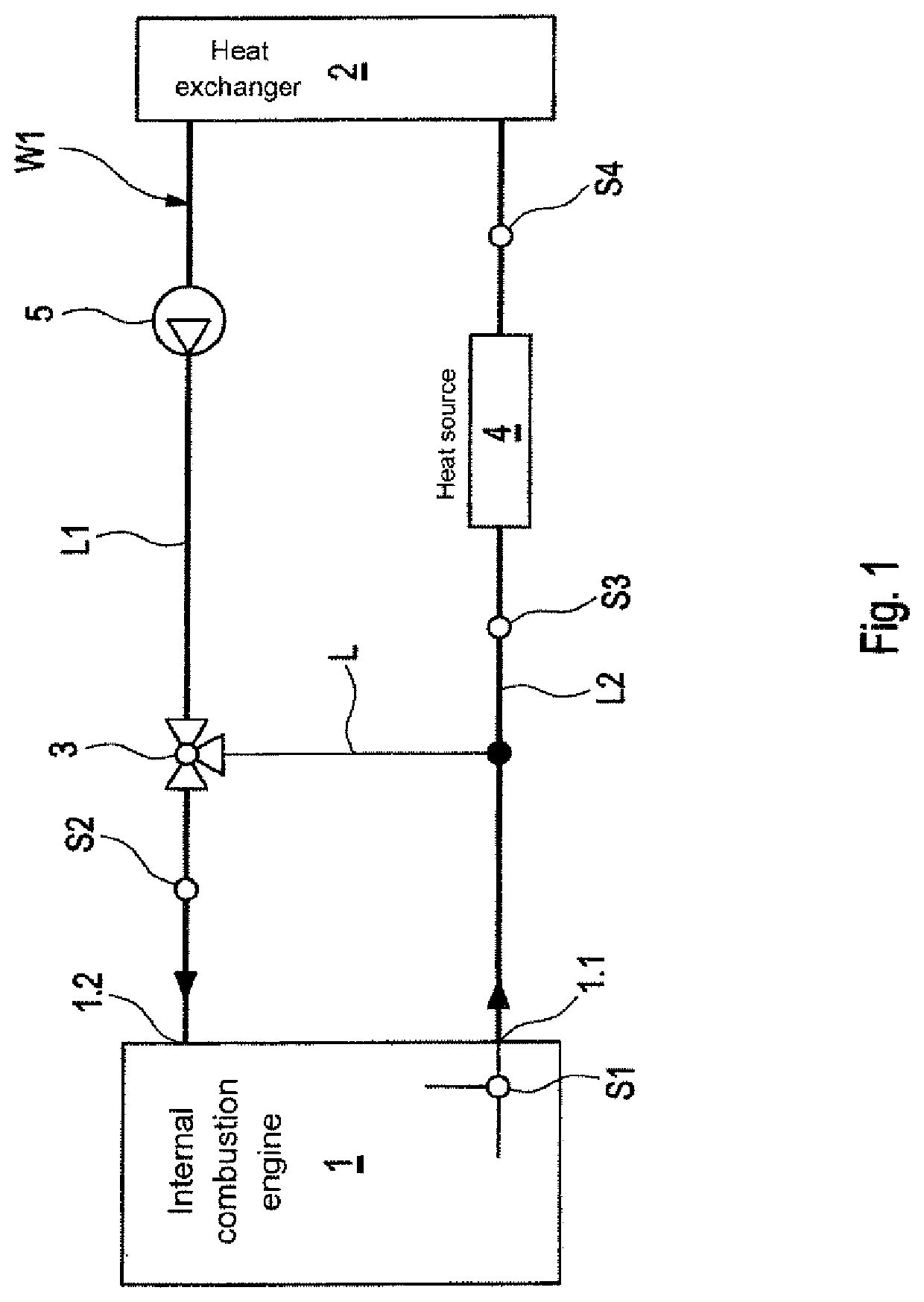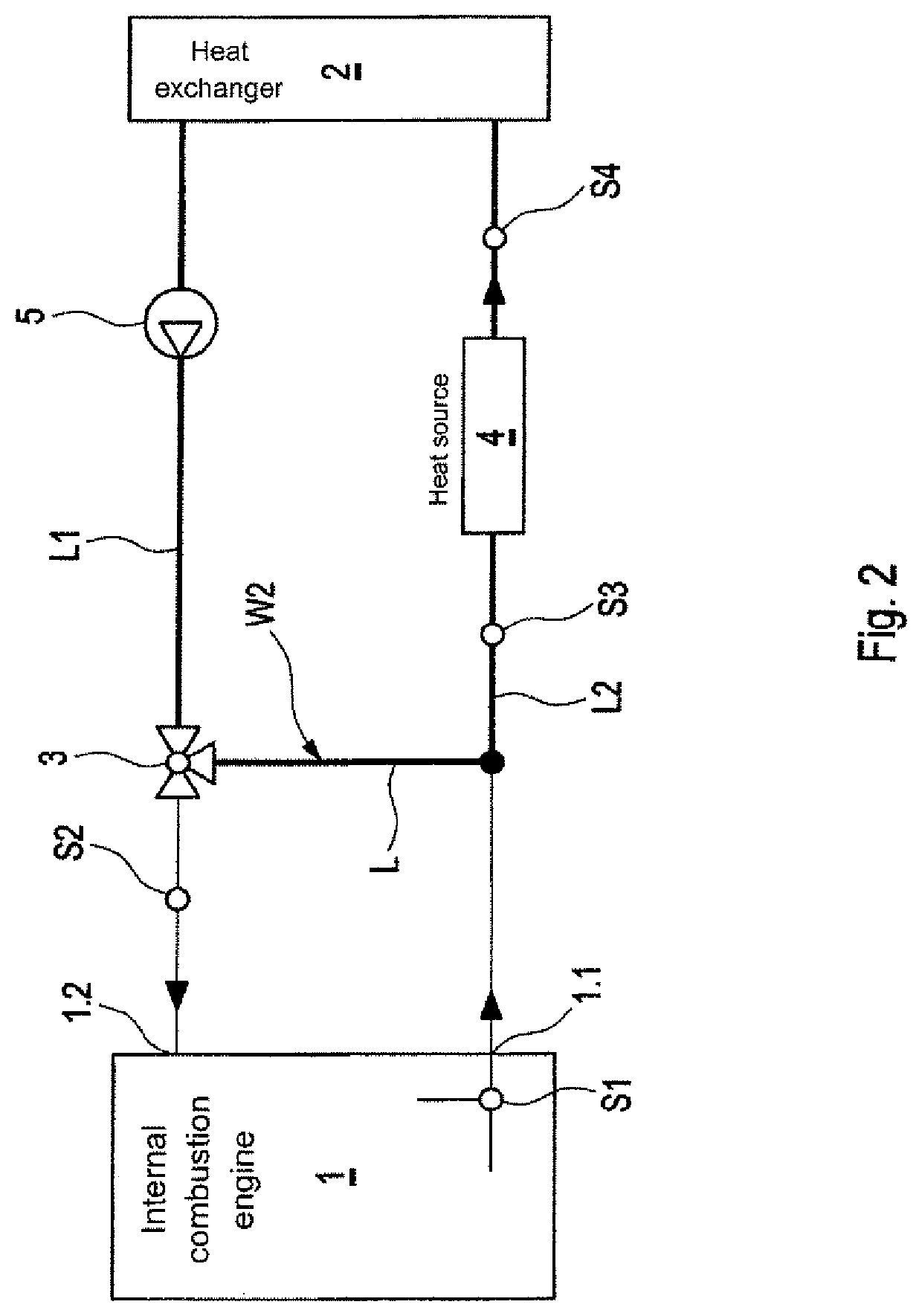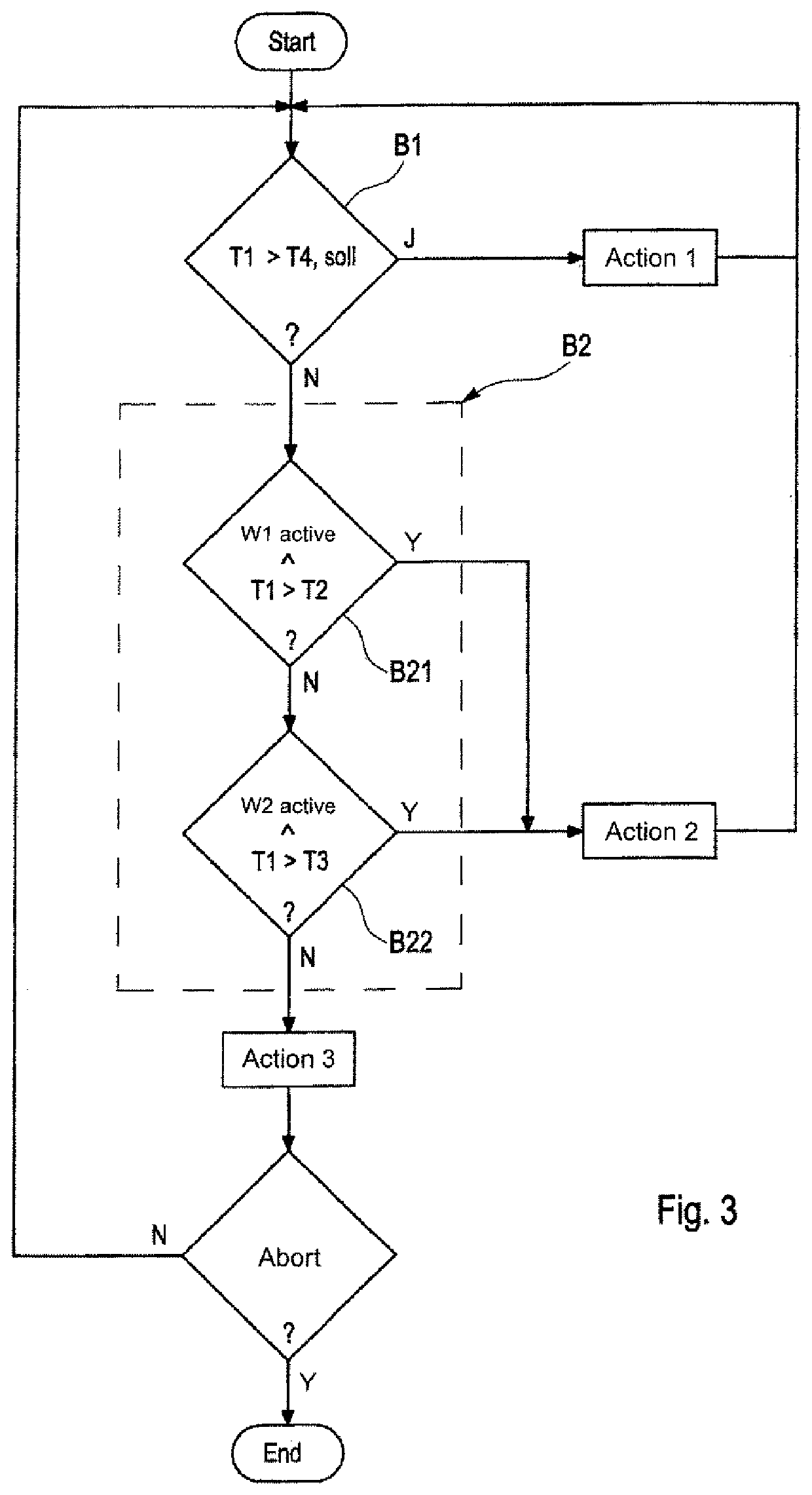Heating system and method for heating a vehicle interior of a vehicle having an internal combustion engine
a technology of internal combustion engine and heating system, which is applied in the direction of vehicle heating/cooling devices, vehicle components, transportation and packaging, etc., can solve the problem of not always being able to achieve the highest possible energy efficiency in all operating states of travel, the internal combustion engine heat generation is kept low, and the effect of increasing the heat generation ra
- Summary
- Abstract
- Description
- Claims
- Application Information
AI Technical Summary
Benefits of technology
Problems solved by technology
Method used
Image
Examples
Embodiment Construction
[0042]The structure of a heating system of a hybrid vehicle for heating its interior according to FIGS. 1 and 2 includes an internal combustion engine 1 as well as a heat exchanger 2, which is part of an air conditioning system of the hybrid vehicle. The internal combustion engine 1 and the heat exchanger 2 are coupled to each other via a heat circuit.
[0043]This heat circuit is composed, on the one hand, of a connecting line L1 connecting the heat exchanger 2 via an electric cooling water pump 5 and a ⅔-way valve 3 with a coolant inlet 1.2 of the internal combustion engine 1 and, on the other hand, a connecting line L2 connecting a coolant outlet 1.1 of the internal combustion engine 1 via a heat source 4 with the heat exchanger 2.
[0044]Furthermore, this heat circuit includes a bypass line L bypassing the internal combustion engine 1 which can be opened or closed by the ⅔-way valve 3 as a bypass valve. A first temperature sensor S1 is provided to measure the coolant temperature T1 a...
PUM
 Login to View More
Login to View More Abstract
Description
Claims
Application Information
 Login to View More
Login to View More - R&D
- Intellectual Property
- Life Sciences
- Materials
- Tech Scout
- Unparalleled Data Quality
- Higher Quality Content
- 60% Fewer Hallucinations
Browse by: Latest US Patents, China's latest patents, Technical Efficacy Thesaurus, Application Domain, Technology Topic, Popular Technical Reports.
© 2025 PatSnap. All rights reserved.Legal|Privacy policy|Modern Slavery Act Transparency Statement|Sitemap|About US| Contact US: help@patsnap.com



